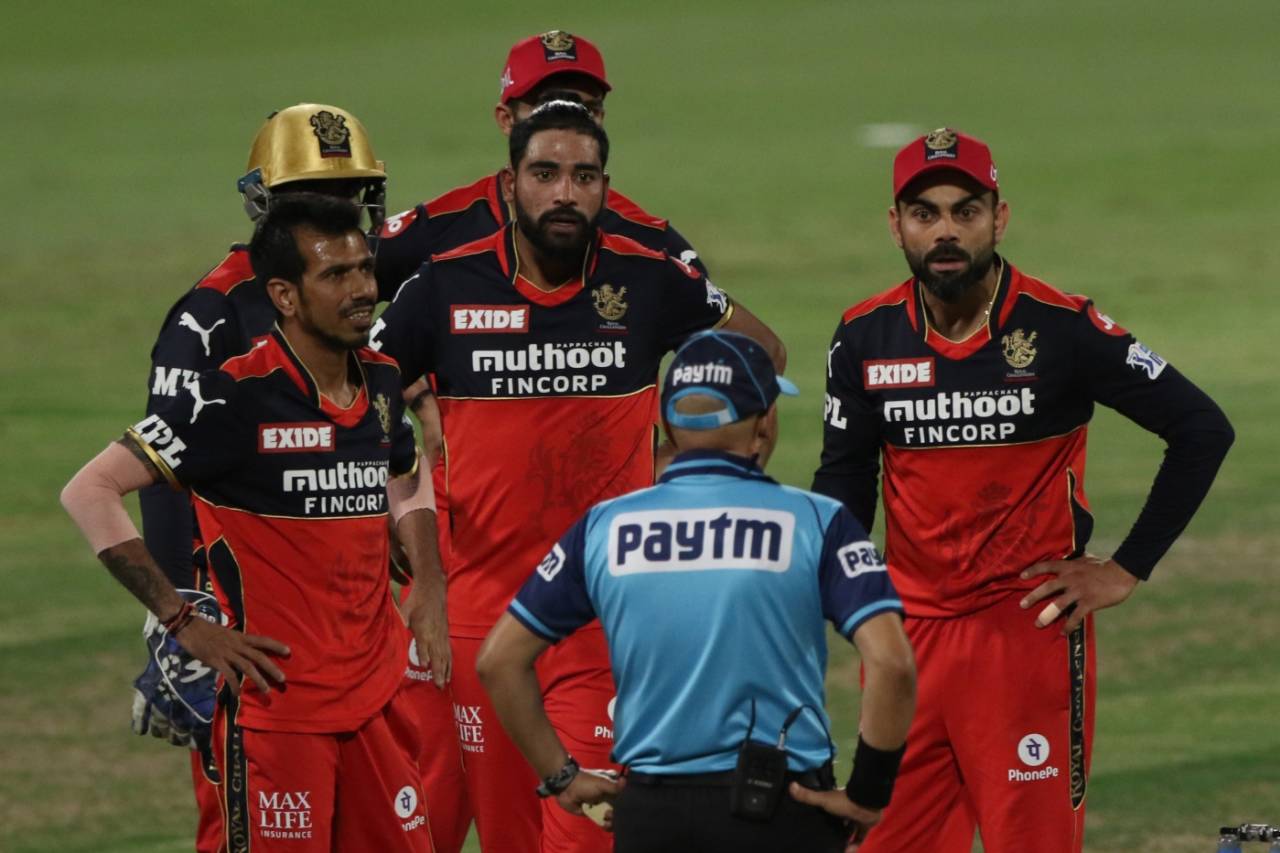To increase the accuracy and speed of decision-making, IPL 2024 will have the Smart Replay System.
ESPNcricinfo has learned that under the Smart Replay System, the TV umpire will receive inputs directly from two Hawk-Eye operators who will be sitting in the same room as the umpire and provide him with images captured by Hawk-Eye's eight hi-speed cameras across the ground. The TV broadcast director, who used to be a conduit between the third umpire and the Hawk-Eye operators until now, will no longer be involved under the new system.
It is understood that the Smart Replay System will allow the TV umpire to refer to more visuals than they previously had access to, including split-screen images. Take the example of a relay catch taken mid-air by the first fielder on the boundary rope. In the past, the broadcaster was unable to provide a split screen of the fielder's feet and hands at the precise moment when the ball was caught. Under the new system, a split screen can show the umpire when the ball was caught, or released, alongside synchronised footage of the feet.
Similarly, a split screen can now show, in case of an overthrow that goes for four, whether the batters had crossed or not when the fielder released the ball (think
2019 World Cup final for an example of a specific use case). Previously the TV umpire did not get such clear visuals, primarily because the broadcaster couldn't marry the two images.
There are eight Hawk-Eye cameras at any match: two on each side of the ground on the straight boundaries and two on each side square of the wicket. Until IPL 2023, Hawk-Eye cameras were mainly used for ball tracking and UltraEdge. So, outside of checks for lbws and edges, the broadcaster largely used footage from their own cameras for any on-field referral. That included referrals for stumpings, run-outs, catches and overthrows.
In the case of a stumping referral, under the Smart Review System, the TV umpire can ask the Hawk-Eye operators to show him the split screen. In case there is a visible gap when the ball passed bat, he will not ask for the UltraEdge (to see if it was a caught behind) and instead directly proceed to check the side-on replay for the stumping. If the TV umpire doesn't see a clear gap between bat and ball, only then he will refer to UltraEdge.
For stumpings, the new system will show the TV umpire tri-vision - essentially footage from side-on cameras as well as from front-on in a single frame. The front-on camera angle is important because it gives an accurate picture of bails being removed. Previously the broadcaster would show the side-on angle from each side along with footage from Stump Cam. But Stump Cam records the action at a low speed of approximately 50 frames per second, as opposed to the Hawk-Eye cameras which record at approximately 300 frames per second, meaning there will now be more accurate footage for the umpires to base their decision on.
The Smart Review System is also likely to provide more clarity in the case of a catch taken inches off the turf. Such referrals have in the past sparked debate over the TV umpire's decision, with the video evidence upon which that decision was based seemingly not conclusive. Under the old system, the TV umpire would ask the TV director to provide him with the best angle available to provide clarity on whether the ball bounced before the fielder pouched it or if the fingers were under the ball. Even the zoomed-in visuals did not always provide conclusive evidence.
Now, under the Smart Review System, Hawk-Eye will show a single frame straightaway with images from front-on and side-on angles. The TV umpire can then choose to zoom in from a particular angle.
It is understood that the conversations between the TV umpire and the Hawk-Eye operator are likely to be aired live, allowing the viewer to understand the thought process behind decisions better.
Speed of play is critical in T20 cricket, and the Smart Review System aims to hop over unnecessary steps to arrive at the right decision in the smallest amount of time. One good example is lbw reviews. The protocol so far involves the TV umpire being provided initially with Spin Vision, which comes from a camera that is positioned in front of the wickets outside the boundary on each side of the pitch. If the ball is close to the bat, the TV umpire would then ask to check UltraEdge. Once satisfied there was no bat involved, he would then proceed to check ball tracking. Under the Smart Review System, if the Hawk-Eye operator spots that the ball had pitched outside leg, he will tell the TV umpire immediately and they will then prioritise ball tracking.
The ECB has previously trialled a similar referral system in the Hundred.
The BCCI conducted a two-day workshop on the new system in Mumbai on Sunday and Monday for select umpires. It is learned that about 15 umpires, comprising both Indian and overseas umpires, will work with the Smart Replay System during IPL 2024 which starts on March 22.
Nagraj Gollapudi is news editor at ESPNcricinfo

